 Gem Meta Tags for better SEO
Gem Meta Tags for better SEO
Meta tags are important for your website/webapp.
For example title, description, favicon help with for SEO and visibility:
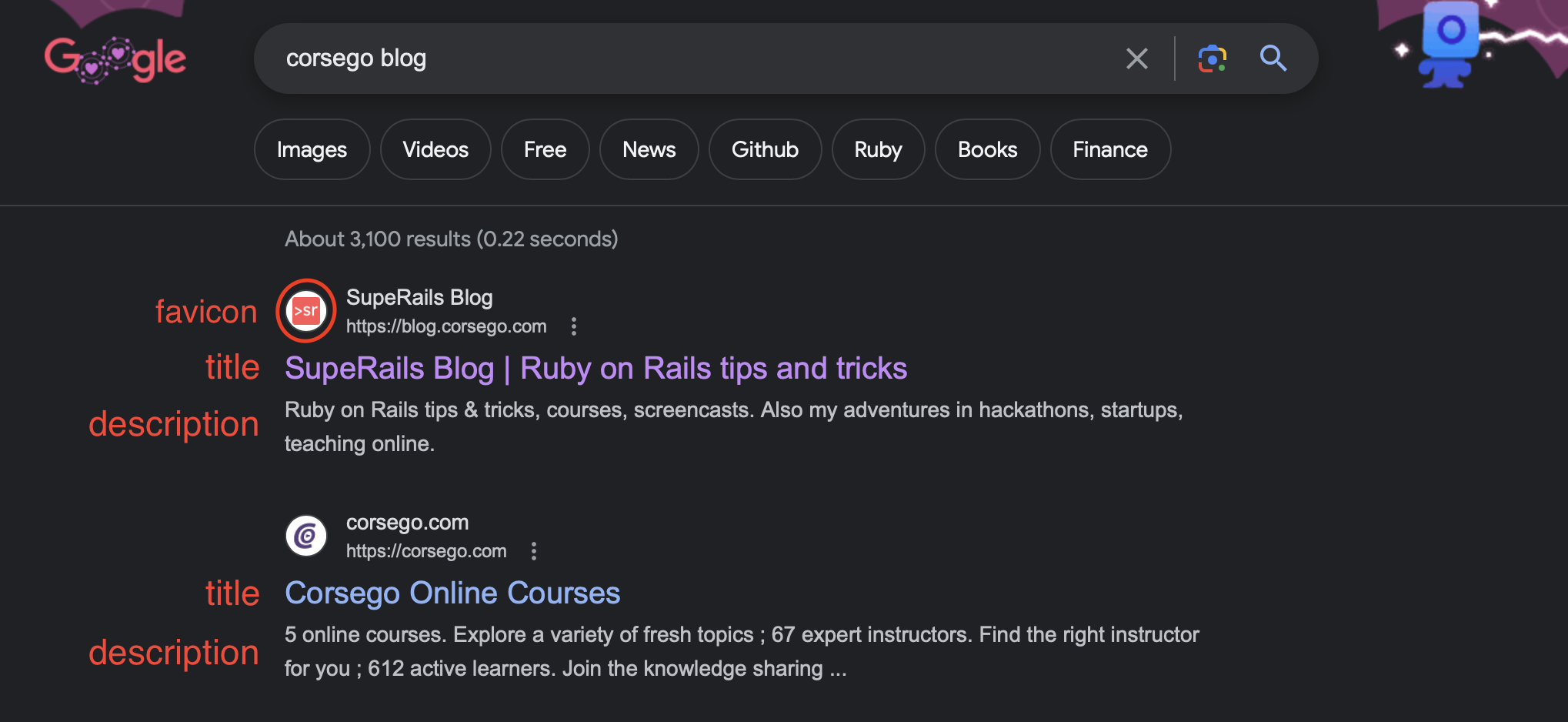
og:image, og:title, og:description, og:url, make link previews look nice when sharing on social:
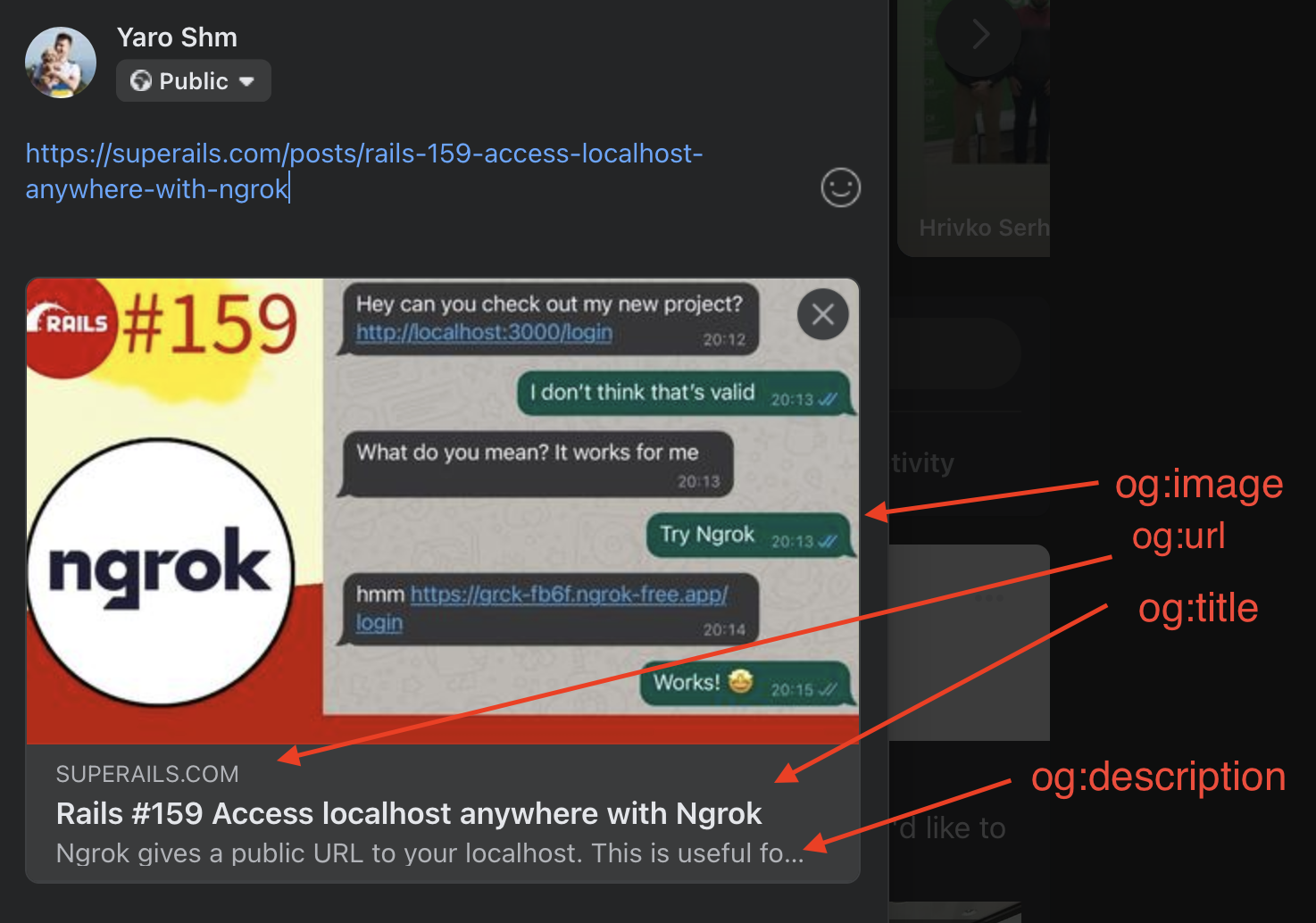
title tag makes browser tab readable:

Here’s how basic meta tags can look in the <head> of an HMTL document:
<head>
<title>Playlists | SupeRails</title>
<link rel="icon" type="image/x-icon" href="/images/favicon.ico">
<meta name="description" content="Gem Meta Tags for better SEO">
<meta name="author" content="Yaroslav Shmarov">
<meta name='copyright' content='SupeRails'>
<meta name='language' content='EN'>
<meta name='robots' content='index,follow'>
<meta name='revised' content='Sunday, July 18th, 2010, 5:15 pm'>
<!-- <meta name='revised' content="<%= @post.updated_at.strftime('%A, %B %eth, %Y, %l:%M %P')"> -->
<meta property="og:title" content="Title of the shared link">
<meta property="og:description" content="Description of the content">
<meta property="og:image" content="URL of the image">
<meta property="og:url" content="URL of the shared link">
<meta property="og:type" content="Type of content">
<meta property="og:site_name" content="Name of the website">
<meta property="og:locale" content="Language and country of the content">
<meta name="twitter:card" content="Type of Twitter card">
<meta name="twitter:title" content="Title of the shared link">
<meta name="twitter:description" content="Description of the content">
<meta name="twitter:image" content="http://blog.corsego.com/assets/images/og/posts/meta-tags-without-a-gem.png">
<meta name="twitter:url" content="https://blog.corsego.com/meta-tags-without-a-gem">
<meta name="twitter:site" content="@rails">
<meta name="twitter:creator" content="@yarotheslav"></head>
ℹ️ the keywords meta tags is no longer relevant ☠️
- <meta content="seo, meta-tags, ruby, rails" name="keywords"/>
Add a favicon in a Rails app #
First, add the favicon image into the app/assets/images/thumbnail.png folder.
# app/views/layouts/application.html.erb
<head>
<%= favicon_link_tag 'thumbnail.png' %>
# produces
<link rel="icon" type="image/x-icon" href="/assets/thumbnail.png">
Great in-depth article: How to Favicon in 2024: Six files that fit most needs
Dynamic <title> and other meta tags #
If a page has a custom title, display it. Otherwise display just “SupeRails”:
# app/views/layouts/application.html.erb
<title><%= content_for?(:title) ? yield(:title) : "SupeRails" %></title>
<%= yield :meta_tags %>
Now you can add a title tag to any page:
# app/views/posts/index.html.erb
<% content_for :title do %>
<%= pluralize Post.count, 'post' %>
|
<%#= Rails.application.class.parent_name %>
<% end %>
The above generates a title 5 posts | SupeRails.
Set other meta tags; assuming you stored an image in app/assets/images/banner.png:
# app/views/posts/index.html.erb
<% content_for :meta_tags do %>
<meta name="og:description" content="<%= @event.location %>">
<meta name="og:image" content="<%= asset_url('banner.png') %>">
<% end %>
# app/views/posts/show.html.erb
<% content_for :title do %>
<%= @post.title %>
|
<%= Rails.application.class.module_parent_name %>
<% end %>
# => "How to create meta tags | SupeRails"
Image meta tag #
Assuming you have a Post model that has_one_attached :cover_image, you can use it OR fallback to a default image if nothing is attached:
def og_image(post)
post.cover_image.attached? ? url_for(post.cover_image) : asset_url('banner.png')
end
<meta name="og:image" content="<%= og_image(post) %>">
Use gem meta-tags #
For more complex behaviour and more meta_tag types (like description, tags/keywords, image, OpenGraph), better use gem meta-tags.
# console
bundle add meta-tags
rails generate meta_tags:install
Add display_meta_tags to the layout, where you can set the default meta tags for all pages:
# app/views/layouts/application.html.erb
<head>
<%= display_meta_tags site: Rails.application.class.module_parent.name,
description: 'Modern Ruby on Rails screencasts',
keywords: 'ruby, rails, ruby-on-rails',
reverse: true, # app name at the end like `5 posts | SupeRails`
image: asset_url("logo.png"),
og: {
image: asset_url("logolong.png"),
}
icon: "/favicon.png", type: "image/png"
%>
</head>
Override the default meta tags from a controller action with set_meta_tags:
# app/controllers/posts_controller.rb
def index
set_meta_tags title: "#{Post.size} posts"
end
def show
set_meta_tags title: @post.name,
description: @post.description,
keywords: @post.tags.pluck(:name).split(', ')
end
def new
set_meta_tags title: "#{action_name.capitalize} #{controller_name.singularize}" # New post
end
You can also customize the settings in a config file:
# config/initializers/meta_tags.rb
MetaTags.configure do |config|
config.title_limit = 200
config.truncate_site_title_first = true
end
Example implementations:
Testing OpenGraph #
ℹ️ OpenGraph API meta tags are used to improve the appearance and functionality of shared links on social media platforms
Use Ngrok to get a public URL to your localhost, and use a meta tag previe tool to test how your website renders.
Preview tools:
opengraph.xyz - VERY GOOD PREVIEW TOOL ✅
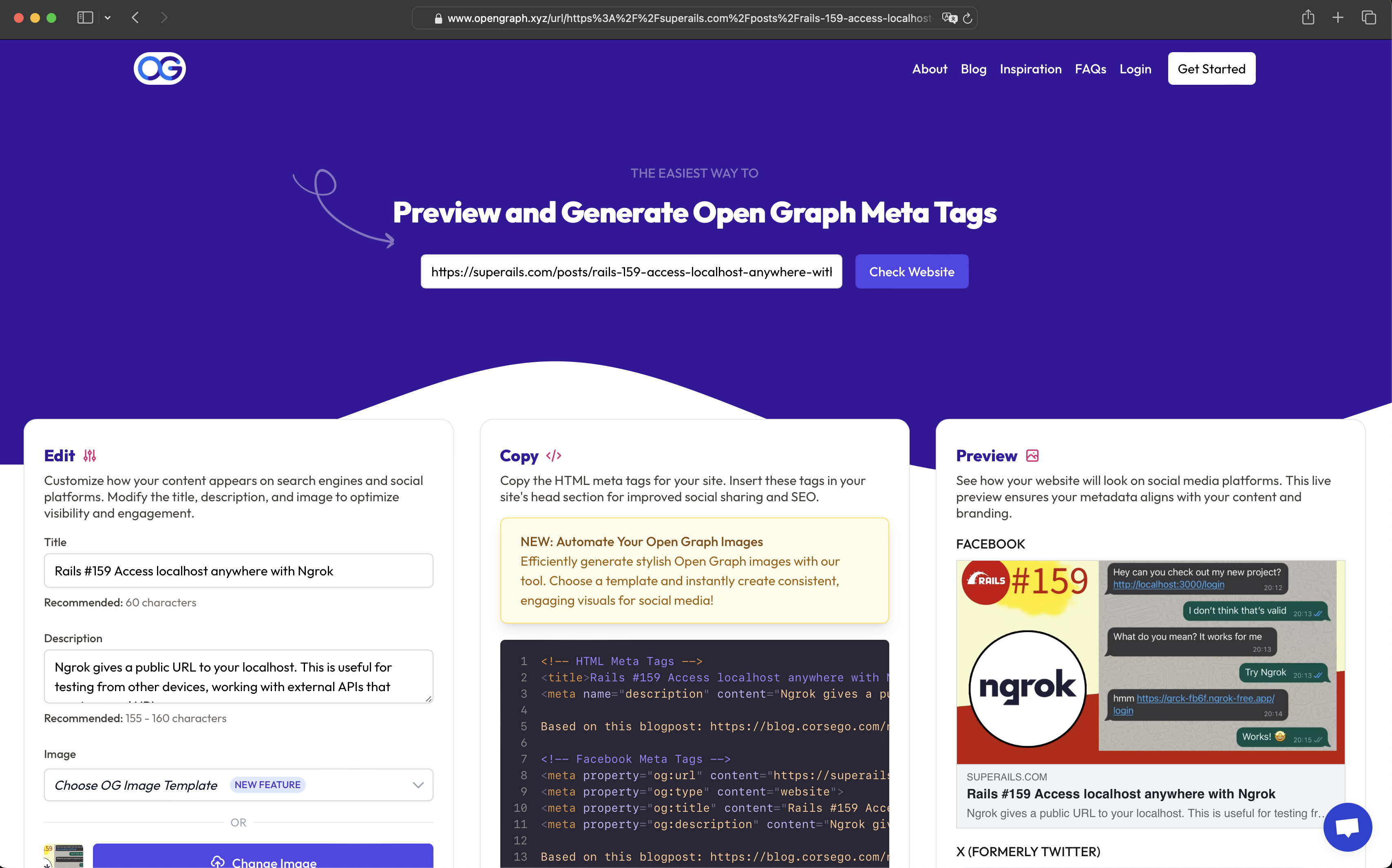

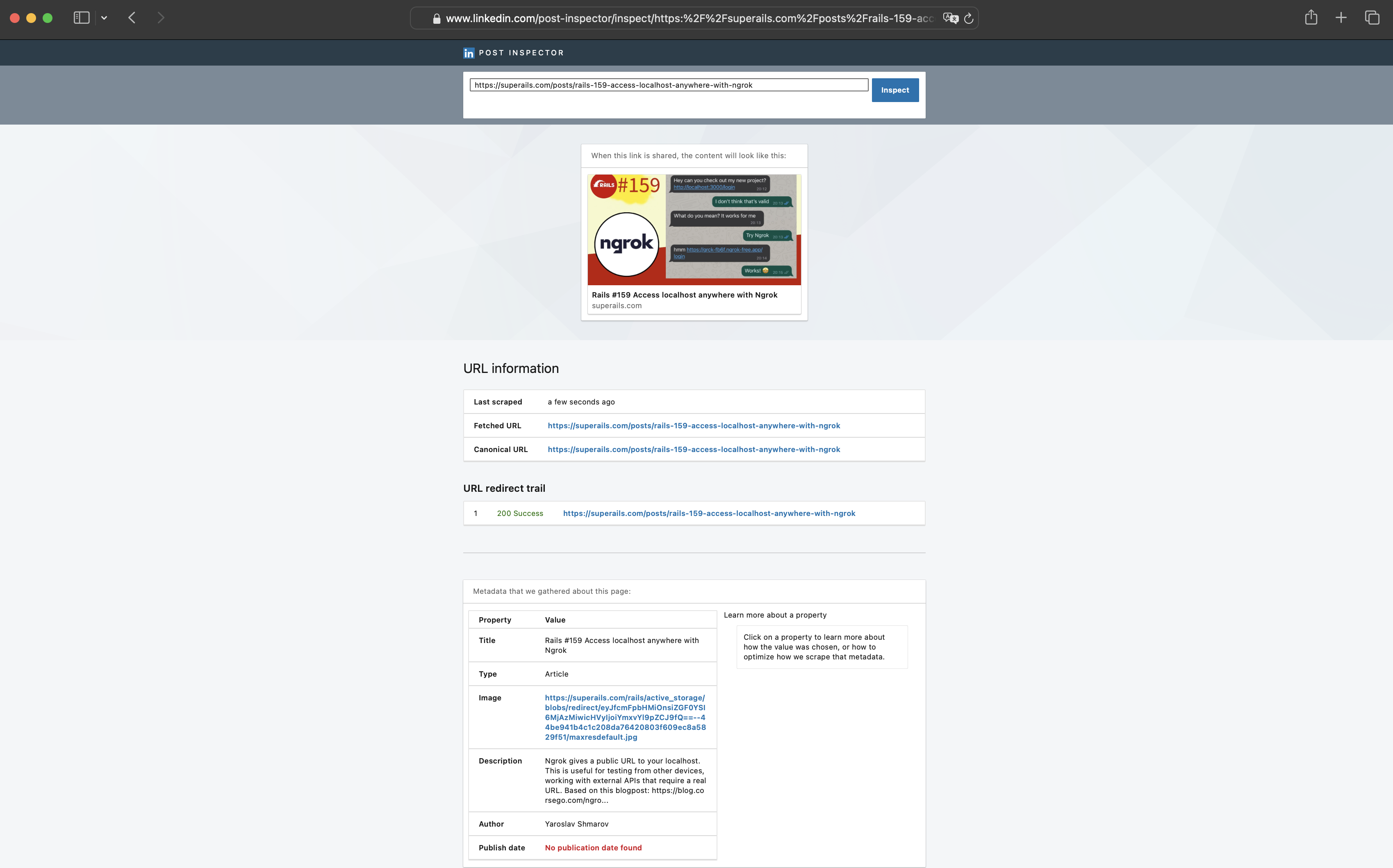
Twitter OG cards docs. They have discontinued their preview tool. Log in, click on “create post”, paste a link, and wait for it to render.
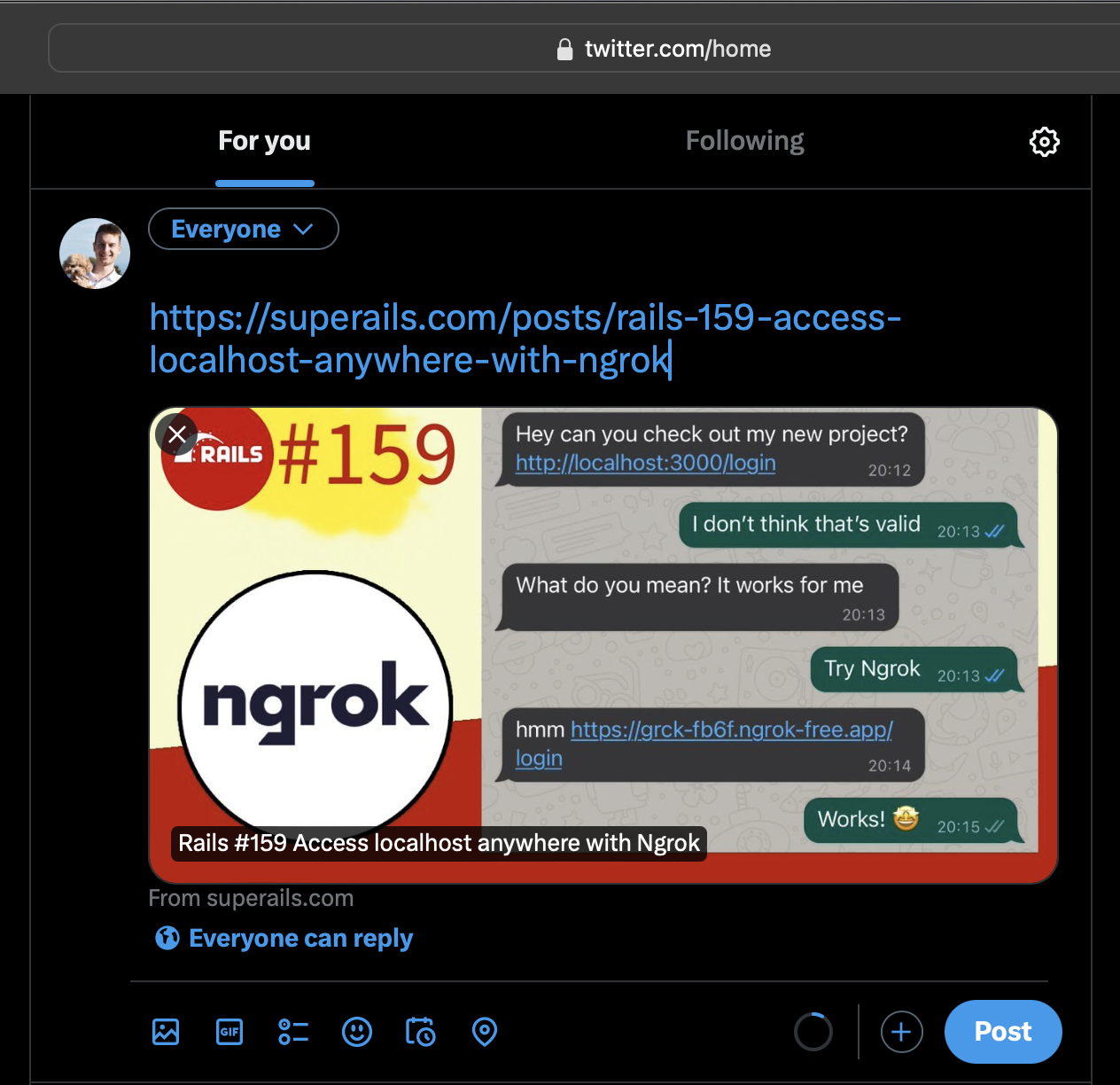
Final thoughts #
💡 There are many tags and it can seem a bit overwhelming to set them all. First focus on the more important meta tags, than do the other ones.
💡 Open Graph image generator sounds like a good SaaS idea:
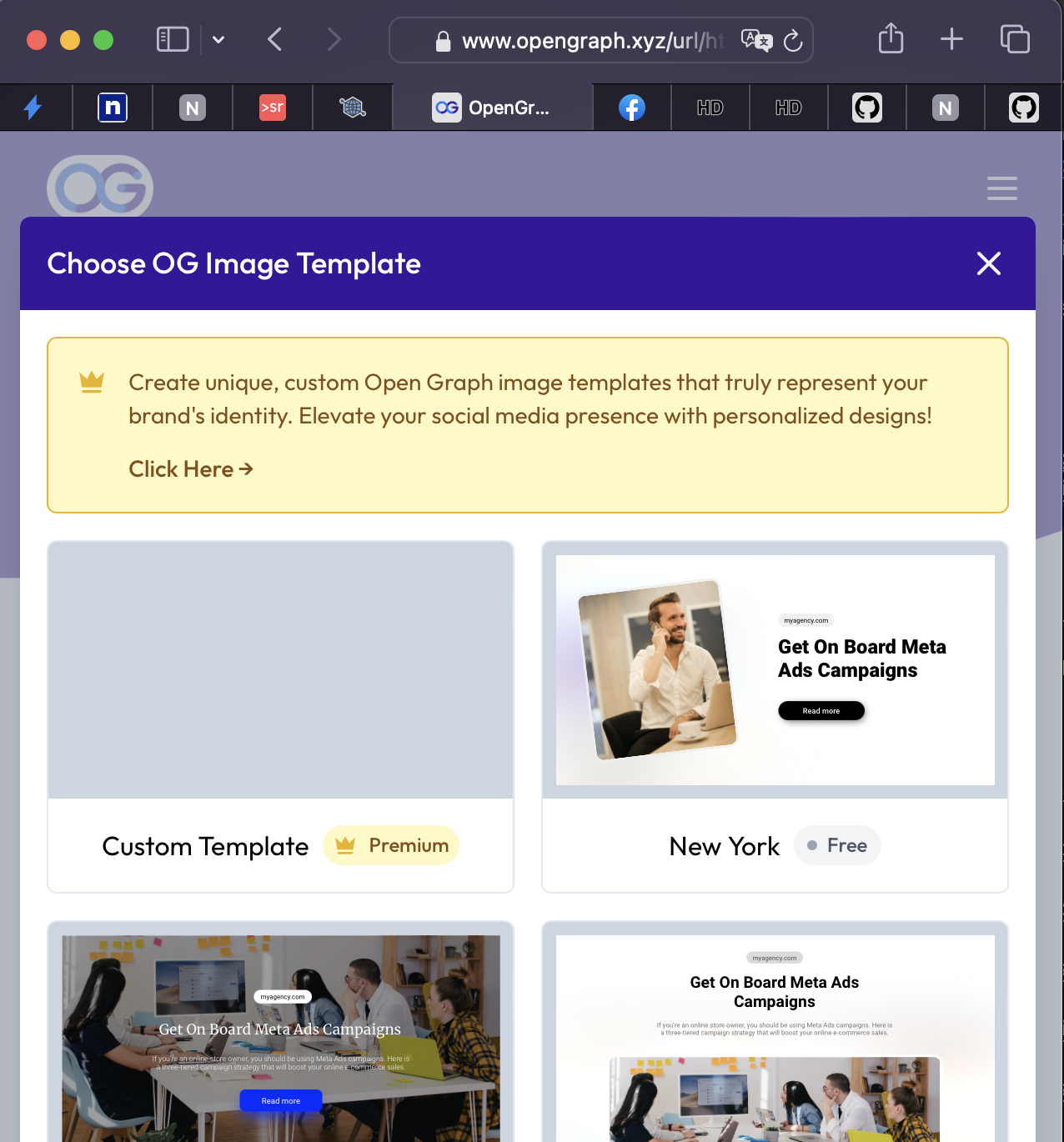
Did you like this article? Did it save you some time?